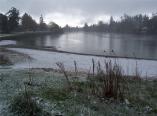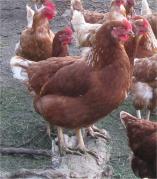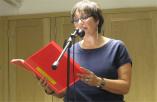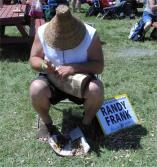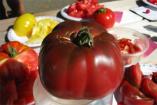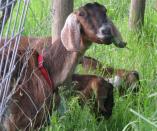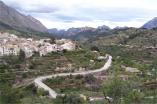…or: what I learned in my last class at Dunsmuir. I had signed up for three linked courses on local agricultural issues. The first was a talk by local organic farmer Brian Hughes, who described a typical year’s activities.
The second, last week, was a talk by Brent Warner about the state of play in agriculture these days, with much discussion about the effects of poor nutrition (whether from bad food choices or from poorly nourished plant or animal sources) on health: obesity and its related health costs through type 2 diabetes and other diseases (one in three BC children are now deemed clinically obese). There was as well talk about farmers’ markets and new opportunities in food retailing and agricultural diversification, if the market and issues such as food traceability and food safety (particularly for older, younger and immune-compromised populations) are properly understood.
Tuesday’s final class was a sobering talk about the Agricultural Land Reserve, and its governing body, the Agricultural Land Commission, by Bob Maxwell, an agrologist and farmer, and Ivan Mishchenko, an organic blueberry farmer. Maxwell walked us through the soil and climate categories – the agriculture capability measures – that are used to determine agricultural land values, preparing the ground as it were for Mischenko to tell us about uses and abuses of the ALR in its current form.
Established in 1974 from various campaign promises made by competing political parties (thank heavens in this case for election rivalries!), the ALR sets aside agricultural land so that it can either be preserved as farmland or farmed. In a time when the planet is facing unprecedented loss of arable farmland through soil degradation, deforestation and population growth, this has saved a lot of good quality land in British Columbia which would otherwise have been paved over long ago.
Statistics familiar to me from the Farmlands conference explain the extreme competition for three percent of the province’s land, where 80 percent of the population lives and which also produces 80 percent of the gross agricultural receipts.
What has happened is that in these two much-desired areas (the Okanagan and the lower mainland/south-eastern Vancouver Island – retirement meccas for Canada because of mild climates and pretty scenery) developers and speculators have managed to make money and do deals to get their way in too many (but not all) cases. There are a number of ways of dodging the rules.
Firstly, there is a mechanism whereby land can be traded out of one area and into another, which is why 90% of the ALR land traded out of the ALR is in northern BC, and not in those two more desirable (climate and soil quality) areas. Some 72% of land has been taken out of ALR protection in the south of the province since 1974.
Put another way, for every acre (.404 ha) of prime farmland added to the ALR, 2.8 acres (1.13) have been taken out for urban development. This matters if the world is to feed itself, since we need .5 ha (1.2 acres) per person for a nutritious and diverse diet that includes both plant and animal foods. At present in BC, where the population is 4 million, we have .63 ha/capita land (not all of it being farmed); the population is estimated to be 6 million by 2035, at which point our ALR land will work out to .42 ha/capita.
A second way land gets removed from the ALR is to make it unusable for farming. Owners can apply for soil fill permits, which sound harmless enough. But this is tied to urban development: undesirable fill from excavation sites (which may include clay, gravel, rock and concrete) is being dumped on top of arable land. Disposal sites for this kind of rubble are very scarce, which makes buying land and getting people to pay you for dumping a lucrative sideline. But this activity covers and makes unusable the agricultural land beneath, and it also damages the drainage in surrounding farmland, making the neighbouring lands less productive as well. Once the land is unusable for farmland, you have good reason for removing it from the ALR and building another development on top.
Good growing soil takes centuries to develop, but can be destroyed in days by this kind of activity; even low-grade agricultural land is useful and necessary to farming, whether for placing farm buildings or pasturing unlikely animals like llamas. And yet we live in a short-sighted society that allows people to profit from this kind of activity, which robs our own future of the ability to feed itself, instead of charging its perpetrators with crimes against humanity.
We were offered some ways to work to preserve the ALR and agricultural land:
1. Support local food systems by buying and growing locally.
2. Advocate to the ALC and local government: do not allow them to say they heard no community concern when they made decisions.
3. Organize your community to protect farmland.
4. Encourage local government to form an agricultural advocacy committee and an agricultural area plan.
5. Ask your local government to develop buffer policies, to provide green strips between urban developments and agricultural land, to allow the sometimes dusty and smelly work of agriculture to go on without conflict.
6. Ask food retailers to carry locally grown food.
